Deep learning
using WebGL
Xavier Bourry
- CTO of Jeeliz, a startup specialized in deep learning using WebGL,
- Co-author of Deep Learning in the Browser,
- WebGL Academy - vanilla WebGL/Three.JS interactive tutorials: www.webglacademy.com,
- Email: xavier@jeeliz.com
- Twitter: @xavierbourry
Deep learning using WebGL
- Jeeliz's work
- What is a deep learning network
- WebGL implementation
- WebGL GPGPU tricks
- Compatibility
- Career advice
What we do @Jeeliz
- Very fast deep neural networks running client side,
- Most interesting use-case: video processing!
- Input: 64 pixels grayscale image → 64*64 = 4096 components vector,
- Output:
- if the image is a face → detection factor,
- how to move the input detection frame → dX, dY, dS

- the 3D rotation? lighting parameters?
- whatever...
- 60 times per second
Demo time :)
Historical use-case: VTO

Face filters
Build Snapchat like face-filter working in the browser.
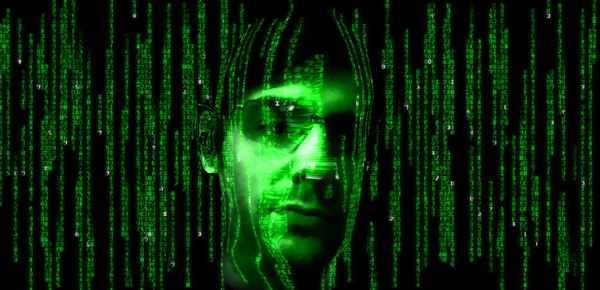
Webojis
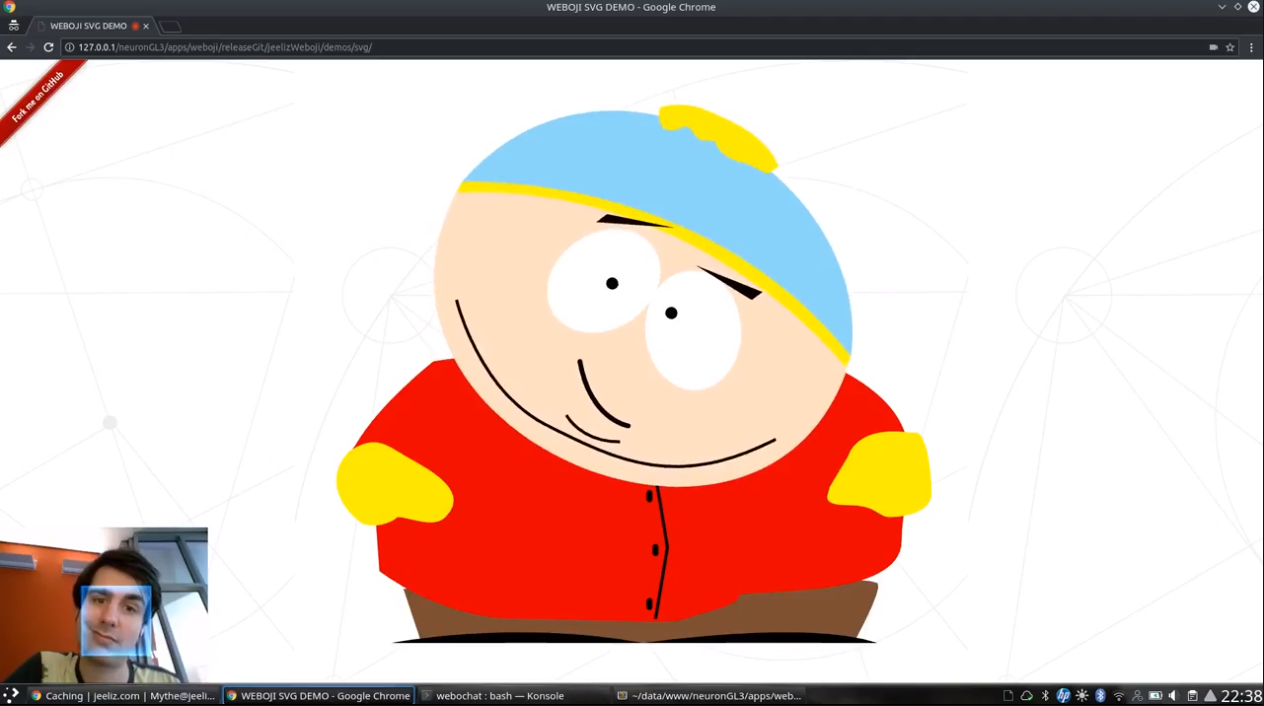
Expression detection library to build animoji like apps running in the browser.
- Demos:
SVG Cartman, 3D Fox - Demo app: webojis.com
- Github repo
3D Object detection
and tracking
Great for augmented reality!
Deep learning networks
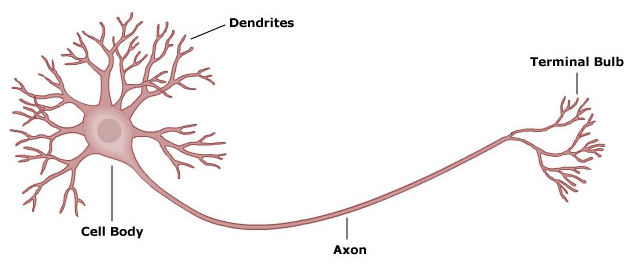


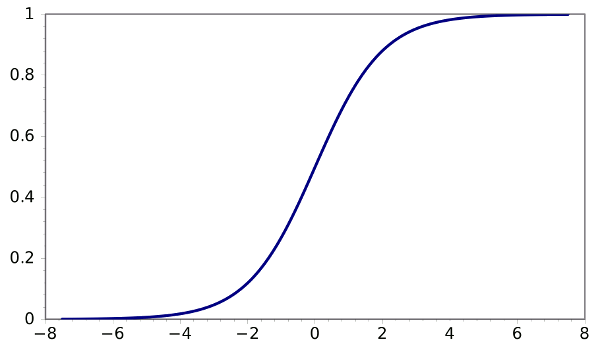
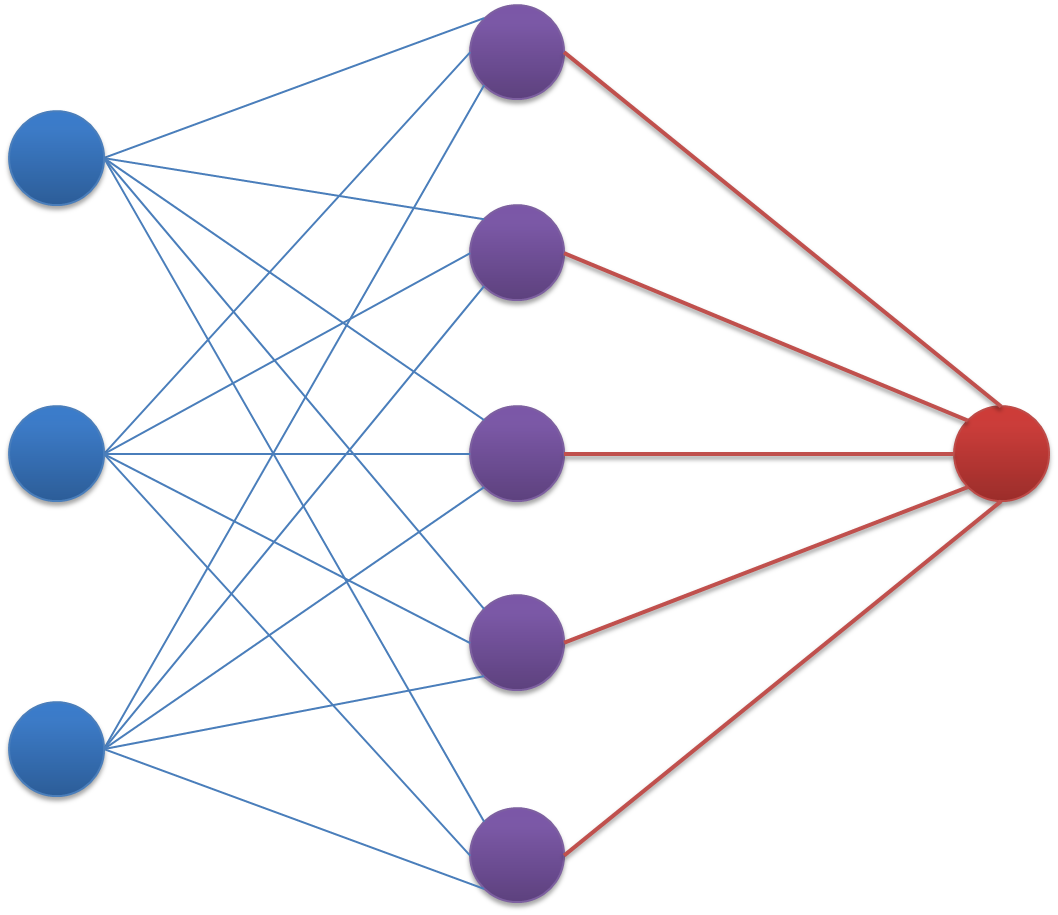

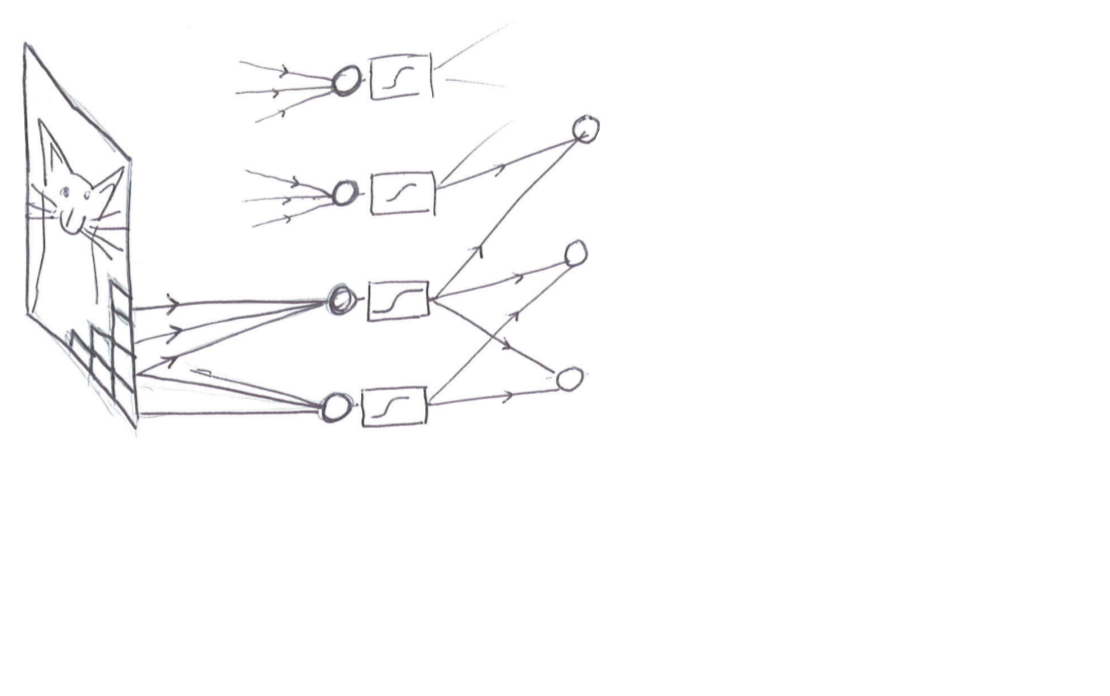
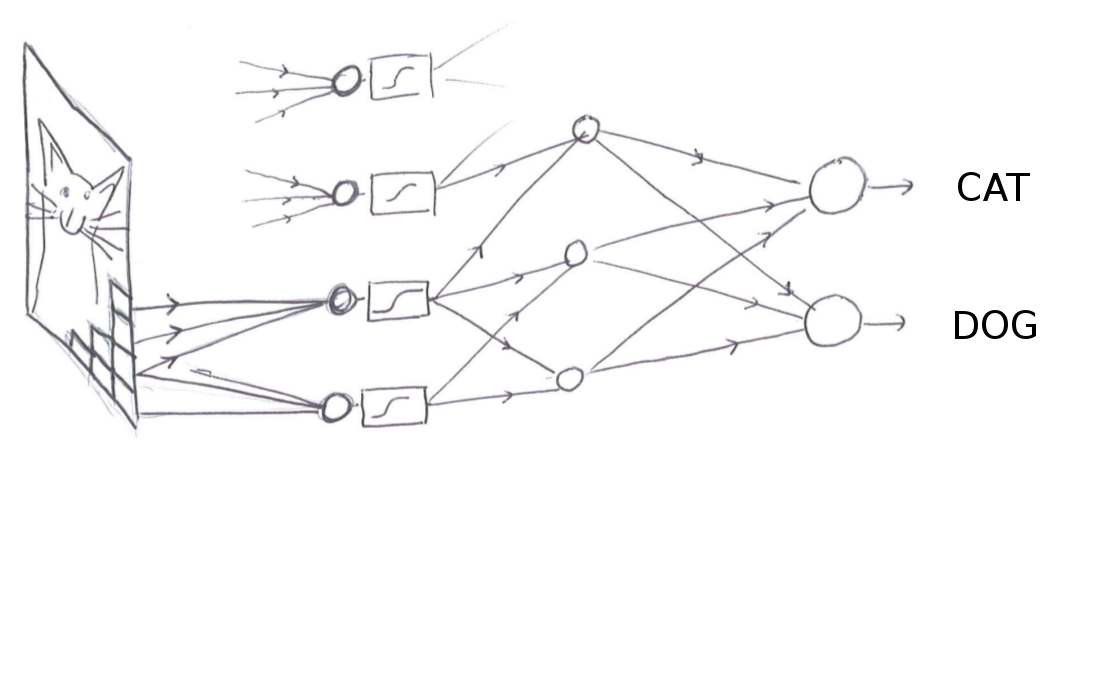
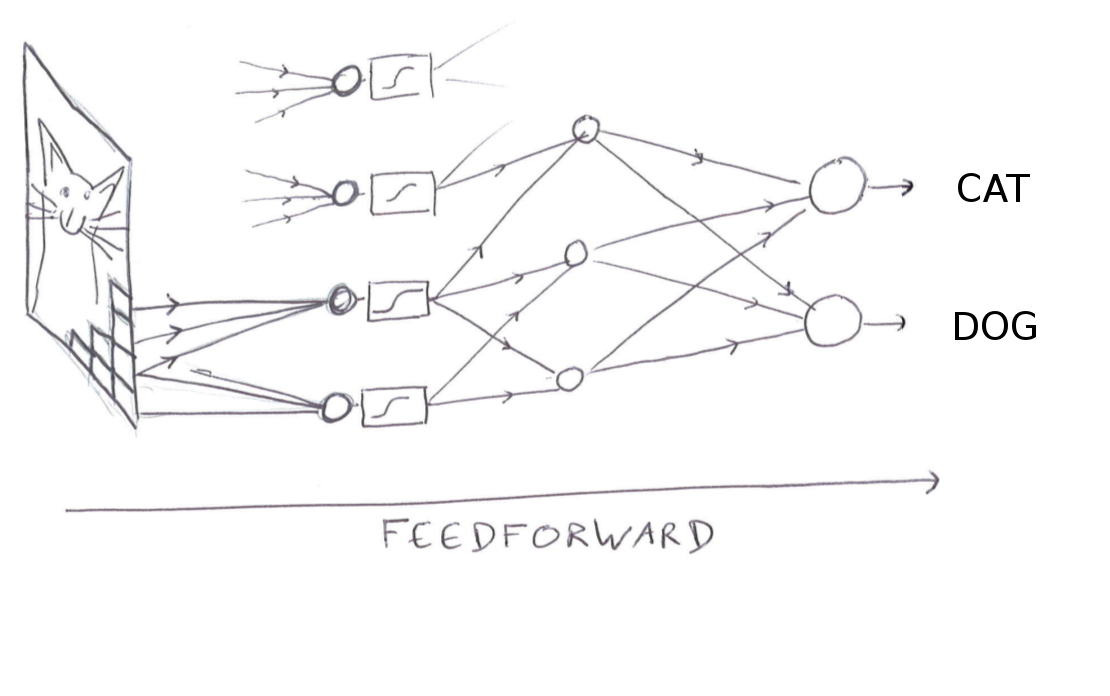
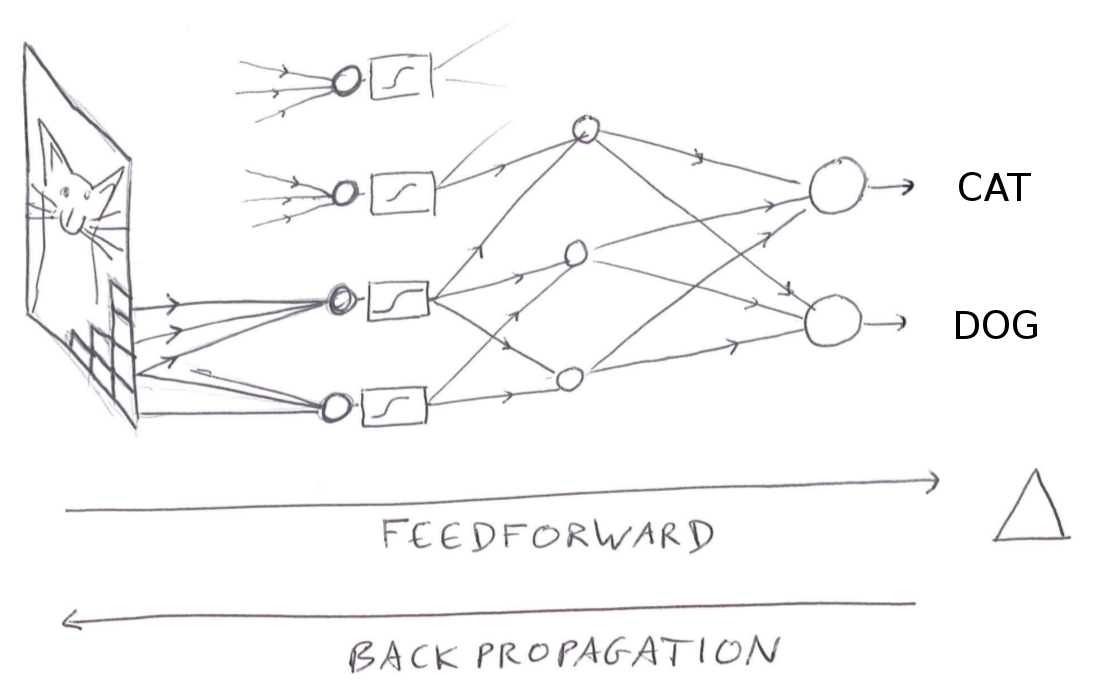
WebGL implementation
Old school GPGPU
- Data is stored into FLOAT/HALF_FLOAT textures
- Each operation is done into the fragment shader
- The output is stored into a texture too (RTT)
- Can be read on the CPU by
GL.readPixels(...)
Shaders use
Vertex shader
→ draw 2 triangles


→ draw 2 triangles


Fragment shader
→ pixel per pixel operations


→ pixel per pixel operations


Pros of GPU processing
- Feedforward & backpropagation → sequential processing by layer,
- But Layer processing → per neuron parallelization,
- image processing → many neurons at least for first layers,
- layer parameter = texture (synaptic weights, connectivity, input summed, ...).

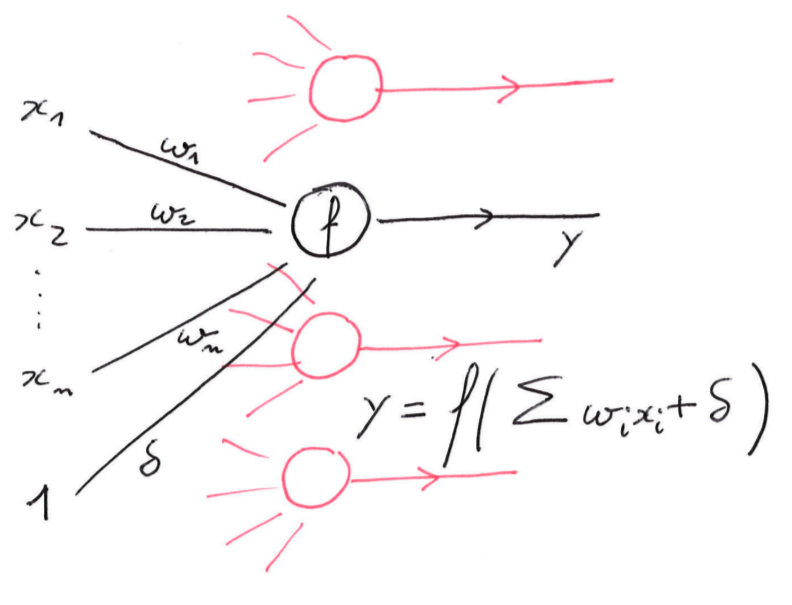





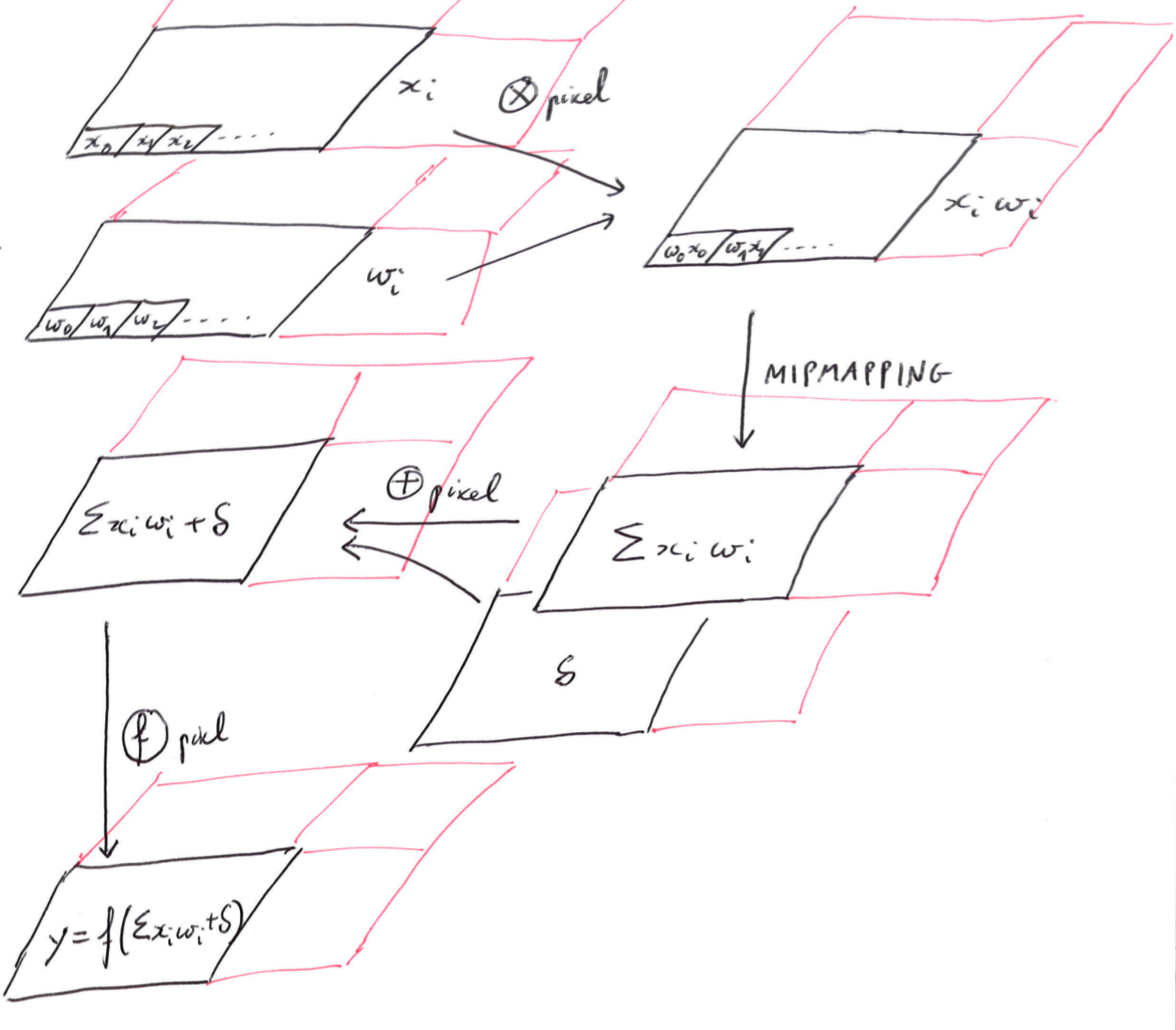
WebGL GPGPU tricks
All on the GPU
What happens in GPU stays in GPU.- Avoid
gl.readPixels(), canvas.toDataURL() - There is always a solution to not use the CPU,
- Synchronization CPU/GPU → can be slow...
Read FLOAT/HALF FLOAT TEXTURES
- No
GL.readPixels()with FLOAT/HALF FLOAT textures, - →
gl_FragColorencodes 1 float in its RGBA channels, - → 4 renderings, for RGBA values.
At the training
- Dataset as texture atlas
- Load everything on the GPU once and for all.
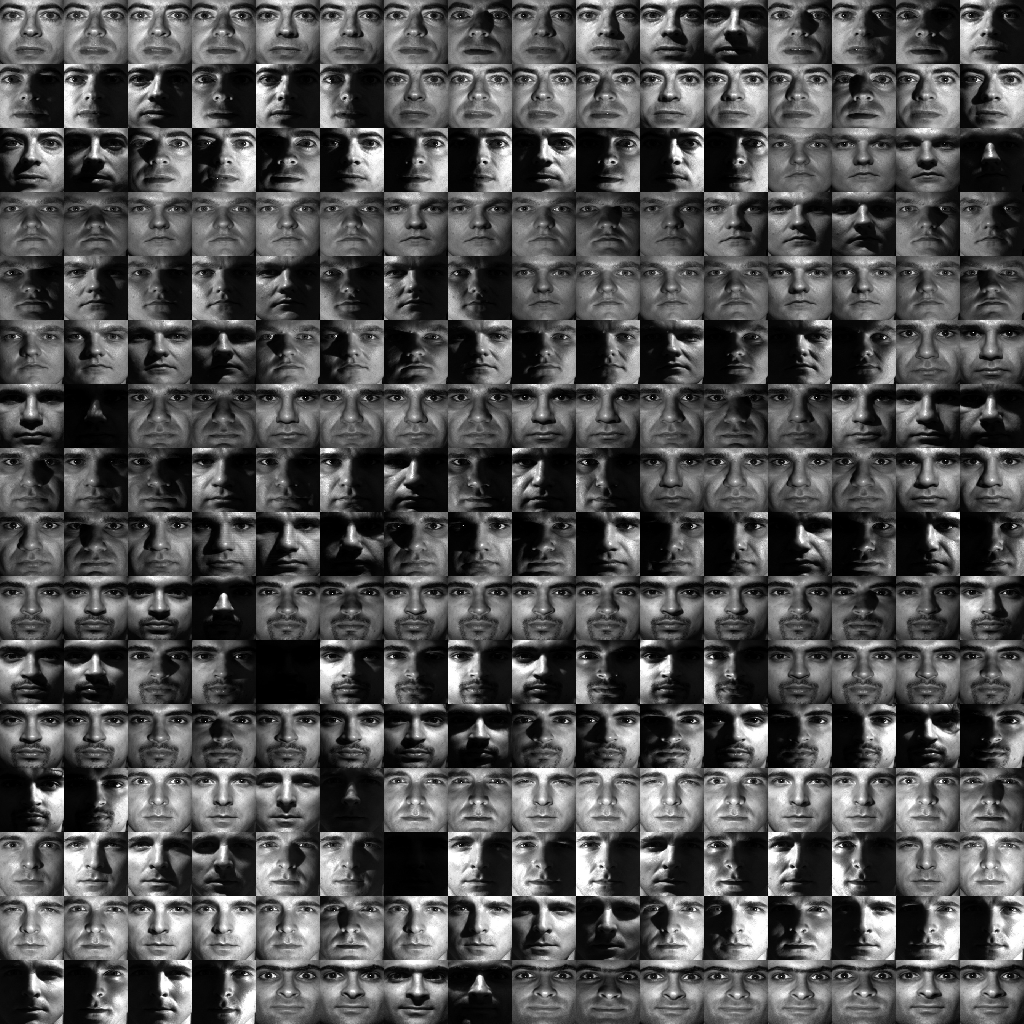
Better than images:
3D rendering
Trainer demo
- Set of 3D models + random parameters (rotation, lighting, ...) → image,
- 3D engine wired to the neural network input,
- Like an infinite training set of images,
- → No overfitting
- → No labelling error
The context
- Initialization options:
GL = canvas.getContext("webgl", { antialias: false, preserveDrawingBuffer: true }) - Toggle another stuffs:
GL.disable(GL.DEPTH_TEST); GL.disable(GL.DITHER);
Floats precision
GL.FLOAT→ 32 bitsGL.HALF_FLOAT→ 16 bits, enough for deep learning,GL.UNSIGNED_BYTE→ 8 bits, not enough,- Empirical result: at least 11 bits for deep learning
Floating point specials
highp float → 32 bits:
→ Fmax = 3.402823 × 1038
FP specials values:
+Inf, -Inf, NaN+Inf, -Inf → can disappear (1/Inf=0) but not NaN!
Example
float ELU(float x){
return mix(exp(x)-1.0, x, step(x, 0.));
}
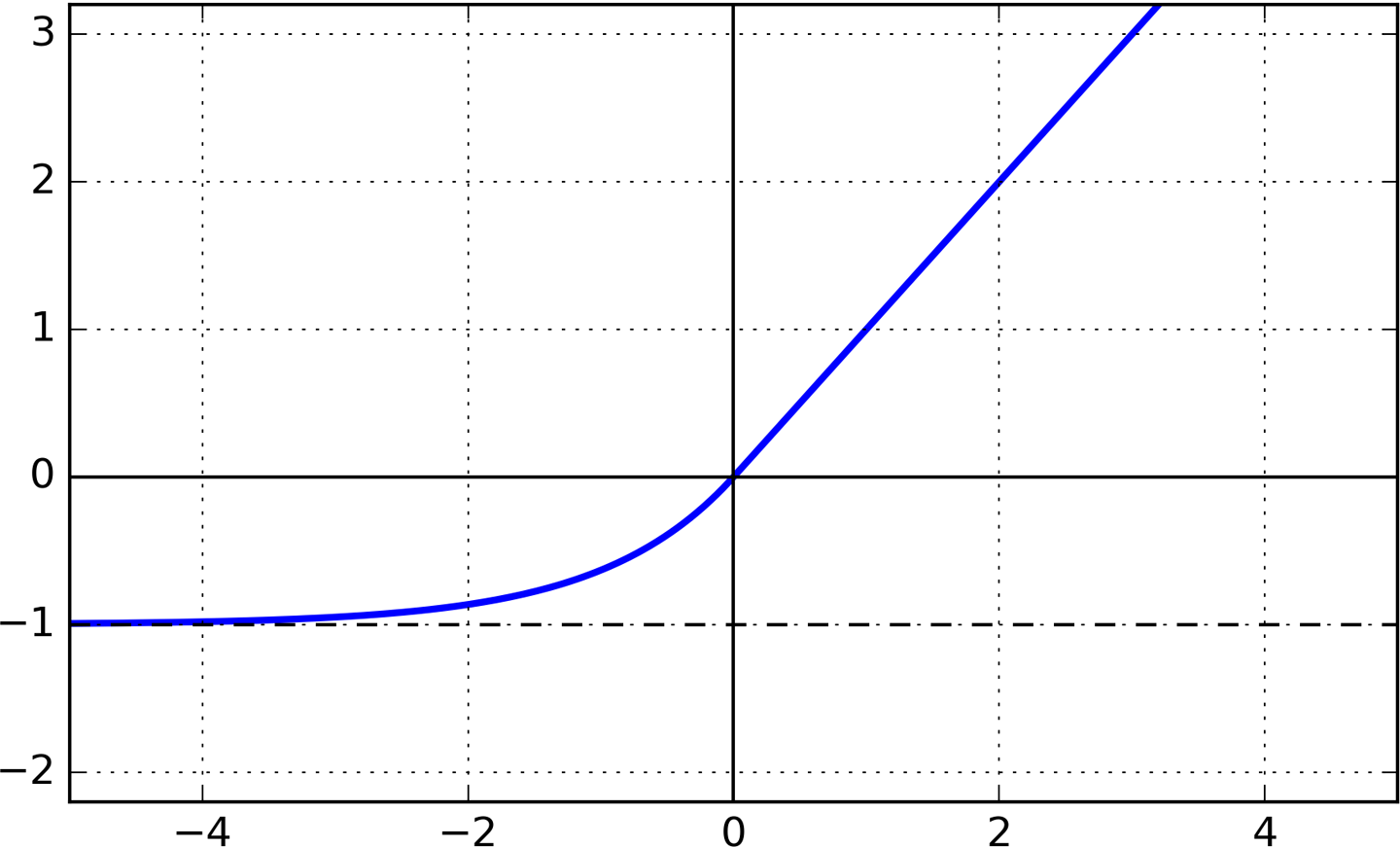
x=100→ELU(100)=100- compute
ELU(100)=
mix(exp(100)-1, 100, 1) = (exp(100)-1) * 0 + 100- But
exp(100) = 2.7.1043 = +Inf
- So
ELU(100) = +Inf * 0 + 100 = NaN + 100 = NaN
Avoiding FP specials
- avoid functions using
exp(), log(), - If
mix()or other GLSL interpolation function is called, make sure that all terms are not FP specialsfloat safe_ELU(float x){ return mix(exp(-abs(x))-1.0, x, step(x, 0.)); } - Majorate or minorate,
- Use L1 and L2 regularization (
w←d*wwith d<1)
Compatibility
GPGPU required capabilities
Required :
- Using float or half float textures,
- Do render to texture with them
Always better :
- Use mipmap on float/half float textures.
WebGL 1 limitations
- Requires
OES_TEXTURE_FLOATorOES_TEXTURE_HALF_FLOATextension, - Better to have
OES_TEXTURE_FLOAT_LINEARorOES_TEXTURE_HALF_FLOAT_LINEAR, - Also ask for
EXT_color_buffer_floatandEXT_color_buffer_half_float, - Test if you can mipmap on float/half float textures,
- Test if you can do Render to Texture on float/half float textures.
WebGL 2 limitations
- Float textures and half float texture are included !
- Render to texture with half float texture is included !
- →you can always do Deep Learning with WebGL2 !!!
- Still requires to enable
OES_TEXTURE_FLOAT_LINEARorOES_TEXTURE_HALF_FLOAT_LINEARfor using mipmapping on float/half float textures.
HALF_FLOAT texture init
OES_TEXTURE_HALF_FLOAT → you can use half float texture.
Problem if initialization from an array:
there is no JS Float16Array() type.
- JS float array → JS
Uint16Array()using binary float format, - If not working (ipad): create a floating point texture, fill it from a JS
Float32Array(), then copy it to the half float texture.
References
Questions ?
xavier@jeeliz.com - @xavierbourry
Career advice
- Main experience: Freelance developer/trainer in Paris between 2011 and 2016 specialized in WebGL/THREE.js,
- Jeeliz: I have already made enough mistakes to give some advice.
Do things for free
- Open-source code repositories,
- tutorials,
- demo applications,
- events,
- blog posts.
Starting a startup
- Associate with different people,
- Project: no bulls***, not too ambitious,
- fits into an existing tech ecosystem,
- release free stuffs to communicate with people of this ecosystem,
- as soon as you can sell something, sell it, even at a cheap price,
- You won't make money on your initial idea.
Questions ?
xavier@jeeliz.com - @xavierbourry